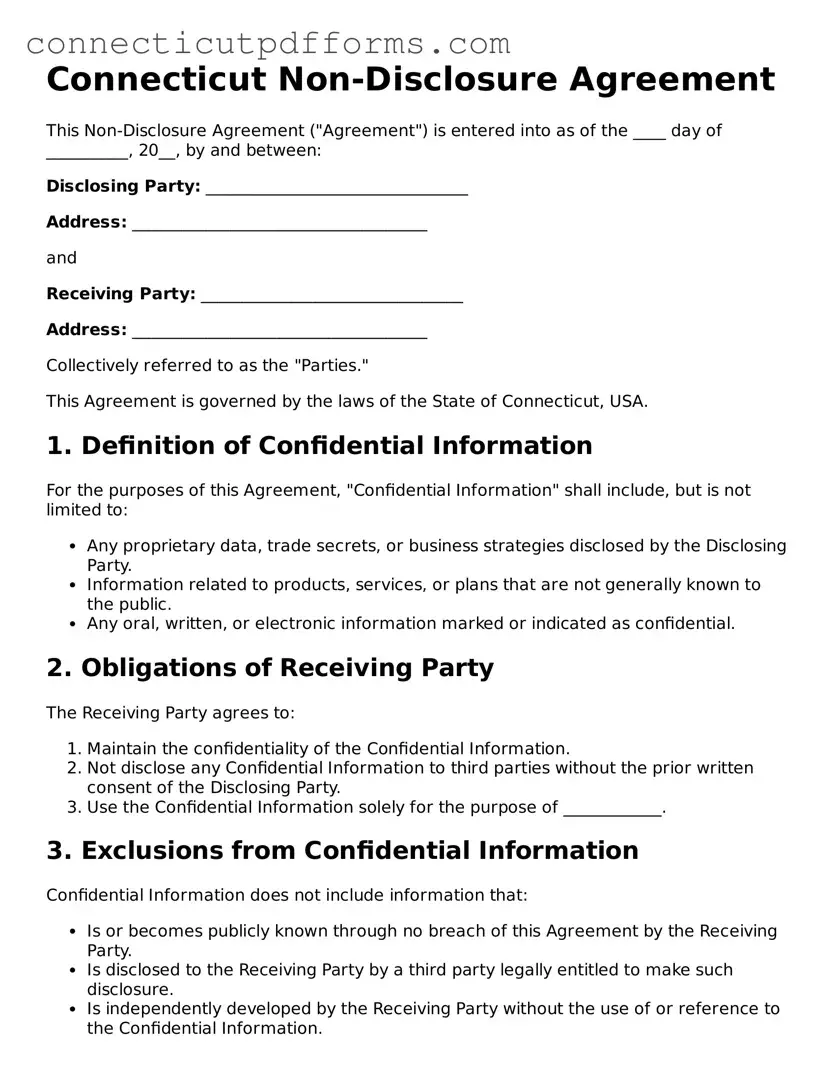Connecticut Non-Disclosure Agreement
This Non-Disclosure Agreement ("Agreement") is entered into as of the ____ day of __________, 20__, by and between:
Disclosing Party: ________________________________
Address: ____________________________________
and
Receiving Party: ________________________________
Address: ____________________________________
Collectively referred to as the "Parties."
This Agreement is governed by the laws of the State of Connecticut, USA.
1. Definition of Confidential Information
For the purposes of this Agreement, "Confidential Information" shall include, but is not limited to:
- Any proprietary data, trade secrets, or business strategies disclosed by the Disclosing Party.
- Information related to products, services, or plans that are not generally known to the public.
- Any oral, written, or electronic information marked or indicated as confidential.
2. Obligations of Receiving Party
The Receiving Party agrees to:
- Maintain the confidentiality of the Confidential Information.
- Not disclose any Confidential Information to third parties without the prior written consent of the Disclosing Party.
- Use the Confidential Information solely for the purpose of ____________.
3. Exclusions from Confidential Information
Confidential Information does not include information that:
- Is or becomes publicly known through no breach of this Agreement by the Receiving Party.
- Is disclosed to the Receiving Party by a third party legally entitled to make such disclosure.
- Is independently developed by the Receiving Party without the use of or reference to the Confidential Information.
4. Term and Termination
This Agreement shall commence on the date first above written and shall continue in effect for a period of _____ years, unless terminated by either party upon written notice to the other party.
5. Miscellaneous
This Agreement constitutes the entire understanding between the Parties. It supersedes all prior agreements or understandings regarding the subject matter herein.
IN WITNESS WHEREOF, the Parties hereto have executed this Non-Disclosure Agreement as of the date first above written.
Disclosing Party Signature: _____________________________________________
Date: ________________
Receiving Party Signature: _____________________________________________
Date: ________________
